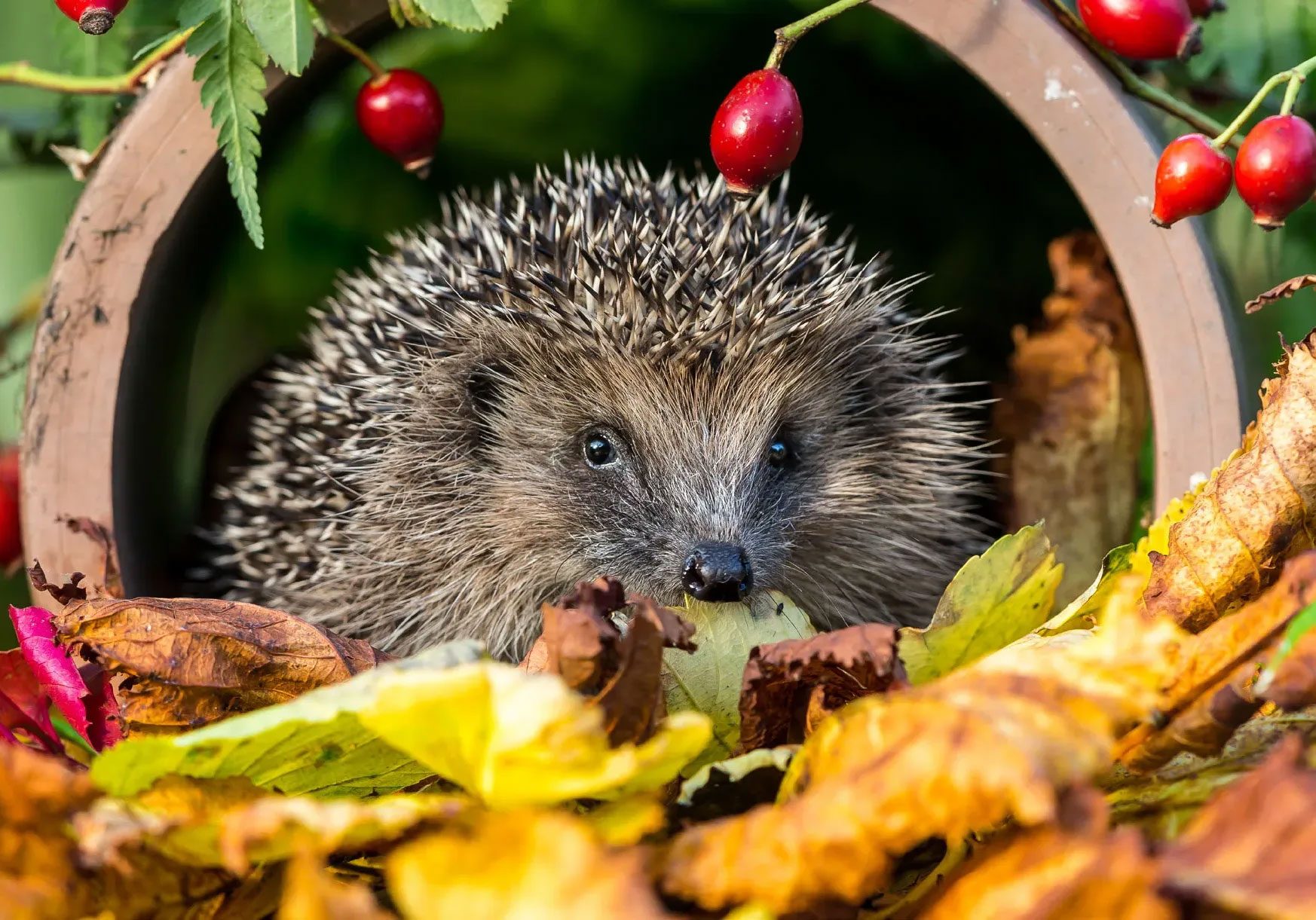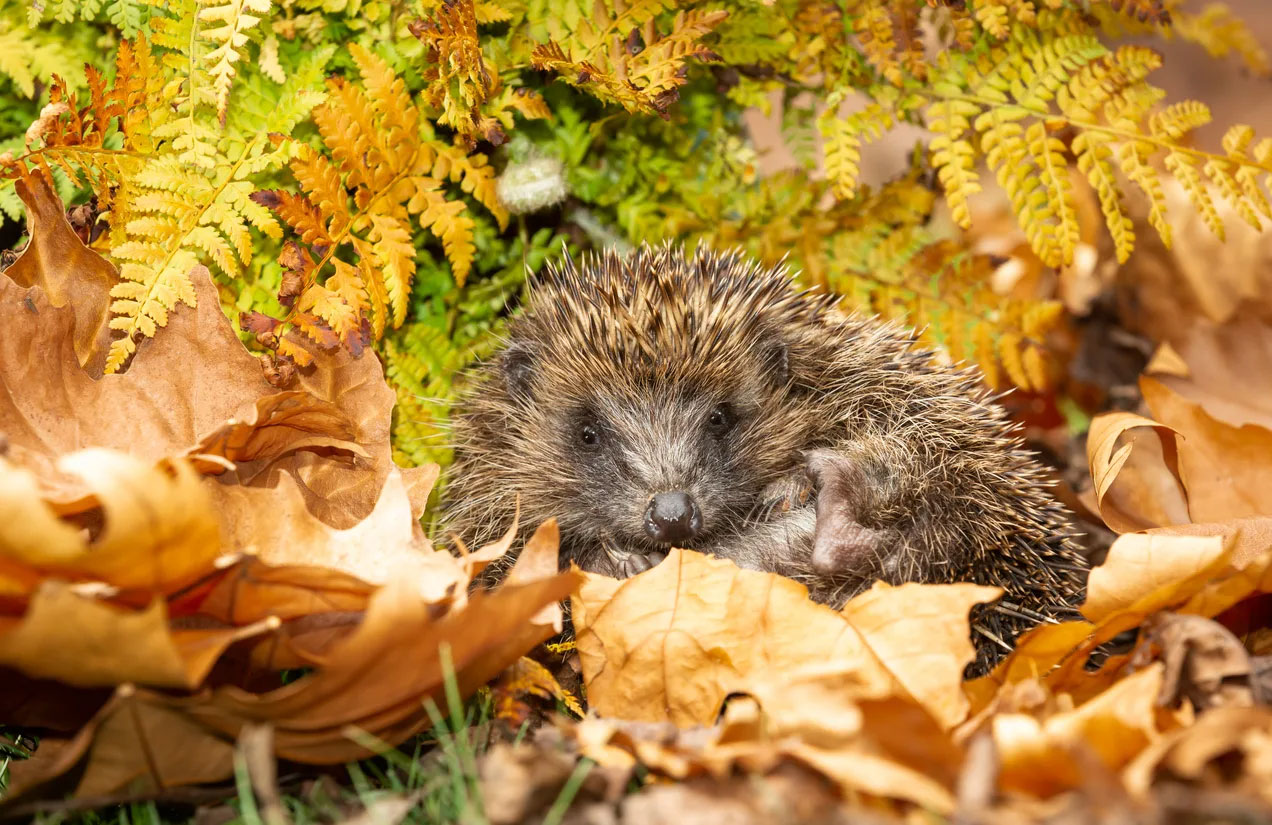
Creating a Hedgehog Haven
by Laura Storey
FOLLOW THESE STEPS TO HELP WELCOME PRICKLY VISITORS WITH OPEN PAWS
If you’re lucky enough, you may have experienced the joy of spotting these endearing and prickly little nocturnal visitors, hedgehogs, snuffling around your lawn for a juicy earwig or a tasty beetle. This spikey species may look sharp, but sadly, their populations have been facing troubling declines.
Back in the 1950s, hedgehogs were a common sight amidst the hedgerows and vegetable patches of a typical British garden, weaving their way through the natural landscape. However, as habitats diminished and new threats arose, the number of humble hedgehogs dwindled significantly, leaving conservationists concerned about their future. According to the Woodland Trust, their numbers have fallen by two-thirds in the last 25 years alone.
“However, it’s not all doom and gloom for these adorable creatures”
Amidst the challenges posed by busy roads, climate change, and predators, our very own gardens may also be partly to blame for the decline in hedgehog populations. While a patio or a beautiful pond may sound fantastic to us, they can pose hazards for these much-loved mammals. Fences and walls erected to keep out noisy neighbours might inadvertently block hedgehogs from reaching their feeding grounds and exploring neighbourhood gardens in search of mates.

However, it’s not all doom and gloom for these adorable creatures! We can take proactive steps to transform our gardens into hedgehog havens and help these spiny little creatures thrive once more:
- Embrace Hedges: Consider the traditional charm and practicality of hedges instead of opting for solid fences and walls. Many people have replaced hedges with these barriers, which, unfortunately, limit hedgehogs’ habitat and movement. By preserving or planting hedgerows, you not only provide a perfect place for hedgehogs to hide and feed but also create a natural boundary that adds a touch of rustic elegance to your garden.
- Install a Hedgehog Highway: If fences are necessary for your garden, there’s still hope for our spikey friends! Consider adding a small gap or hole in your fencing where small creatures can exit and enter without crossing busy roads. Hedgehogs are incredible wanderers, covering significant distances at night, sometimes up to three kilometres. By allowing them easy access across gardens, you help them navigate threats and ensure they have access to abundant feeding areas and cosy nesting spots.
- Attract Insects: To truly support hedgehog populations, we must also be mindful of their dietary needs. Hedgehogs are insectivores, and their diets heavily rely on insects, slugs, and other invertebrates. Encouraging a diverse range of insects in your garden provides a vital food source for hedgehogs, especially during their essential fat accumulation period before hibernation. So, roll out the red carpet for bees, butterflies, ladybugs, and various fascinating crawlers in your garden. The sight of butterflies fluttering amidst your blooming flowers will bring a magical touch to your outdoor haven.
- Nature’s Messiness: It’s time to embrace the beauty of nature’s untidiness! Rather than aiming for a perfectly manicured garden, leave some areas undisturbed and untidy. Fallen leaves and decaying logs may seem clutter to some, but they are treasure troves for insects, fungi, and other wildlife. Creating these natural microhabitats helps support a thriving ecosystem, attracting not only insects but also other small creatures like frogs and toads that hedgehogs love to snack on.
- Tea Time Treats: To ensure your resident hedgehog feels welcomed and well-fed, you can leave out some food to keep them satiated. Hedgehogs are opportunistic feeders, and while they mainly enjoy feasting on insects, they also appreciate a tasty meal of cat biscuits or meat-based pet food. However, please avoid offering them milk, as hedgehogs are known to be lactose intolerant. If you feel extra generous, you can purchase hedgehog-specific food online, specially formulated to meet their dietary needs.
- Pond Safety Measures: Having a pond in your garden can be a delightful addition, but it’s crucial to ensure they are safe havens for all creatures, hedgehogs included. Ensure your pond has sloped sides to allow hedgehogs to climb out easily if they fall in accidentally. This simple adaptation can save hedgehogs from potential drowning hazards. Additionally, you can create shallow areas with rocks, stones, plant pots, or even a specially designed-ladder to provide easy escape routes for these little swimmers.
By incorporating these steps into your garden, you’ll actively contribute to conserving hedgehogs and other wildlife. Creating a hedgehog-friendly haven not only brings joy and wonder to your outdoor space but also plays a crucial role in preserving the natural heritage of these beloved creatures.
Craven&ValleyLife Autumn 23





